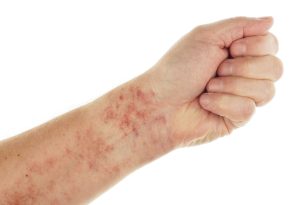 Idiopathic Thrombocytopenia Purpura (ITP) in Children
ITP is a blood disorder with decreased blood platelets, which may result in easy bruising, bleeding gums and internal bleeding.
Idiopathic Thrombocytopenia Purpura (ITP) in Children
ITP is a blood disorder with decreased blood platelets, which may result in easy bruising, bleeding gums and internal bleeding.
The cause is usually unknown, but it may be an autoimmune disorder or follow a viral illness.
It can also occur with certain medicines or vaccines.
Treatment may not be needed.
The most common treatments are immune globulin or corticosteroids.
ITP is a blood disorder that causes a decrease in the number of platelets in the blood, and can result in easy bruising, bleeding gums and bleeding inside the body. The lower the platelet count, the greater the risk of bleeding.
ITP may be acute or chronic:
Acute thrombocytopenic purpura is most common in young children (2 to 6 years old).
The symptoms may follow a common viral illness, such as chickenpox.
Symptoms often go away in less than six months and often within a few weeks.
Treatment is not usually needed.
The disorder typically does not recur.
Acute ITP is the most common form of the disorder.
The MMR vaccine can cause a transient decline and platelet count in children.
At least 70% of cases pediatric ITP will remit spontaneously within one to five weeks, no treatment is required beyond the short term avoidance of injury.
ITP that last from 3 to 12 months is designated as progressive disease.
Chronic ITP is defined this lasting longer than 12 months.
Chronic thrombocytopenic purpura: Adults have this form more often than children, but it does affect teens.
Females have it two times to three times more often than males.
Chronic ITP can recur often.
In most cases, the cause of ITP in children is unknown.
The symptoms of ITP are related to increased bleeding.
Some children have very mild symptoms or none at all.
Symptoms may include:
Purpura.
Bruising.
Bruises can appear on the elbows and knees just from movement.
Petechia.
Nosebleeds
Bleeding in the mouth or in and around the gums
Blood in urine or stool
Vomiting with blood
Bleeding with a head injury.
Normal platelet count is between 150,000 to 450,000.
With ITP, the platelet count is less than 100,000.
Children with ITP often have a platelet count of less than 10,000.
Bone marrow aspiration test is very rarely needed. It looks at the production of platelets and rules out any abnormal cells the marrow may be making that could lower platelet counts.
When treatment is needed, the two most common forms of treatment are steroids and immune globulin:
Corticosteroids. Brief treatment with steroid medicine helps prevent bleeding by decreasing platelet destruction.
Steroids can increase the platelet count in 2 to 3 weeks.
Intravenous immune globulin (IVIg). A single dose of IVIg helps slow the destruction of platelets.
It works more quickly than steroids (within 24 to 48 hours).
Anti-D or Rh immune globulin temporarily stops the spleen from destroying platelets.
Complications of ITP in children include:
Serious bleeding Complications from medicines used to treat ITP
For children with persistent or chronic ITP, additional treatment options include rituximab, splenectomy, and thrombopoietin receptor agonists such as eltrombopag and romiplostim.
Observation is also a viable option for children with mild symptoms and stable platelet counts.
